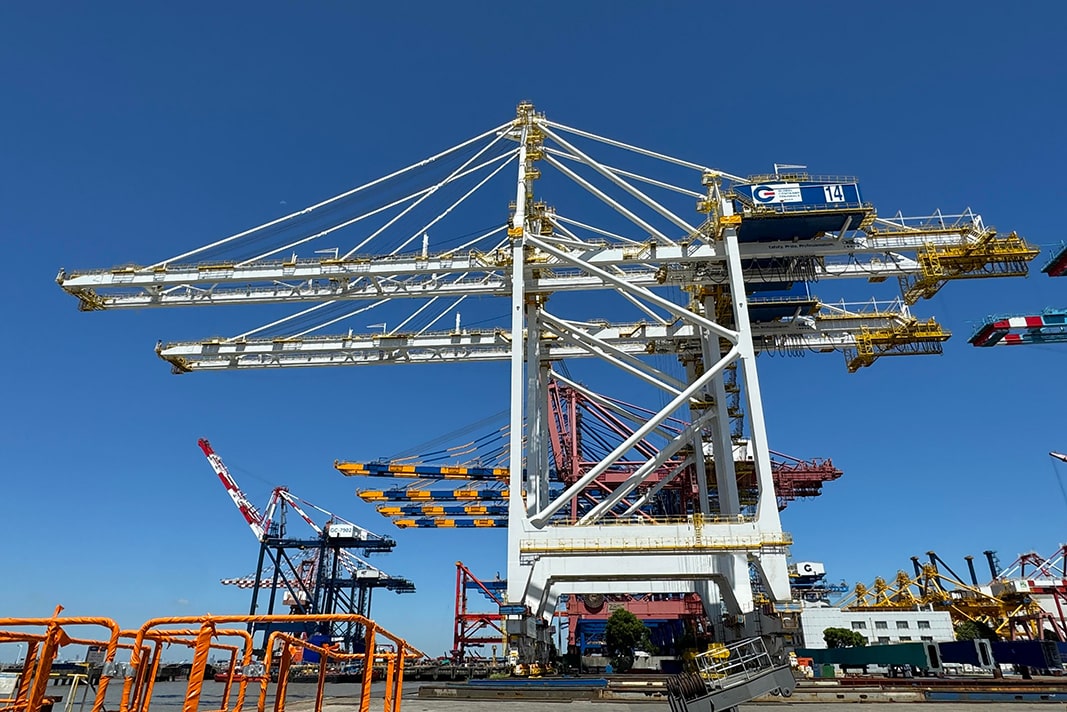New Cranes Set to Transform Deltaport Operations

Casper Phillips & Associates Inc. (CP&A) has successfully overseen the commissioning of the first two ship-to-shore container cranes from Shanghai Zhenhua Heavy Industries Co., Ltd. (ZPMC) at GCT Deltaport in Canada. These cranes are part of a larger order of six, designed to enhance the terminal’s capacity to handle the largest container ships. With advanced features and remote operation capabilities, the new cranes are poised to significantly improve efficiency at Canada’s flagship container terminal.
Innovative Design and Specifications
CP&A has played a crucial role in the development of these state-of-the-art cranes, which are engineered to meet the demands of modern shipping. The cranes have a rated load capacity of 65 tons, allowing them to lift either a single 40-foot container or two 20-foot containers simultaneously. They boast an impressive outreach of 70 meters from the waterside rail and a lift height of 52 meters above the wharf deck, making them suitable for the largest vessels in operation today.
Located at Roberts Bank in Delta, British Columbia, GCT Deltaport spans 210 acres and features a 3,609-foot contiguous berth along with 27,350 feet of dock rail tracks. Typically, over 18,000 containers are stacked at the terminal at any given time. CP&A’s initial involvement included advising on the maximum crane size that could be accommodated on the dock, ensuring that the cranes would be capable of serving the largest container ships efficiently.
To ensure compliance with specifications, CP&A conducted a thorough structural and mechanical design review of ZPMC’s plans. The collaboration with GCT included modifications to a previous project’s purchase specifications, allowing for the seamless integration of the new cranes into the existing infrastructure. GCT’s skilled electrical engineers managed the electrical and control systems, further enhancing the cranes’ operational capabilities.
Advanced Features and Future Operations
The newly commissioned cranes are equipped for remote operation, a feature that will be activated once the necessary control infrastructure is in place. They include a ship profiling system designed to prevent collisions between the lift system and containers on board vessels. Additionally, a chassis alignment program will assist truck drivers in positioning trailers accurately, streamlining the loading and unloading process.
Targeting offshore wind and oil and gas work, Drydocks World orders new-generation crane
Richard Phillips, a mechanical engineer at CP&A, highlighted the importance of rigorous acceptance testing, which is mandated by federal regulations. This testing ensures that all systems function correctly, from load testing to verifying the operation of emergency stop buttons. Phillips noted that GCT has been a valued client for over a decade, facilitating smoother collaboration on long-term projects like this crane installation.
As the demolition of the original, smaller cranes continues, the first two new cranes are expected to be operational by the end of September. In addition to the crane project, CP&A has also contributed to GCT by developing a Site Wind Analysis and Monitor (SWAM) program, utilizing advanced weather forecasting technology to enhance operational safety.
